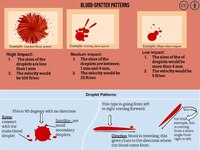
Photo from wikipedia
Dry-state microsampling techniques are convenient and advantageous for sample collection in resource-limited settings, including healthcare systems designed for the underserved population. In this work, a microsampling platform based on an… Click to show full abstract
Dry-state microsampling techniques are convenient and advantageous for sample collection in resource-limited settings, including healthcare systems designed for the underserved population. In this work, a microsampling platform based on an embossed hydrophobic paper substrate is introduced together with three-dimensional (3D) printed cartridges that offer opportunities for rapid (<30 min) drying of the collected samples while also preserving sample integrity when the embossed paper chip is shipped at room temperature. More importantly, a new pinhole paper spray ionization method was developed that facilitates direct mass spectrometry (MS) analysis of the dried blood samples without prior sample preparation. We compared the direct pinhole paper spray MS method with a liquid chromatographic (LC) MS approach that relied upon electrospray ionization (ESI) after analytes present in the blood sample were extracted through liquid-liquid extraction. Limits of detection as low as 0.12 and 0.49 ng/mL were calculated for cocaine and its metabolite benzoylecgonine, respectively, when using the direct pinhole paper spray MS method. Analytical merits such as precision and accuracy, recovery, carryover effects, and analyte stability were all quantified for this new paper spray method and compared to the traditional LC-ESI-MS. Although LC-ESI-MS was observed to be 10× more sensitive, the linear dynamic range for both methods was determined to be the same, in the range of 1-500 ng/mL for both cocaine and benzoylecgonine analytes. When fully developed, the current microsampling strategy could offer an easy-to-use kit that can enable a more effective MS analysis of 20 μL dried blood samples delivered by mail. Both sensitivity (10×) and sample stability are found to be more superior for blood prepared in the embossed hydrophobic paper compared to samples prepared in the planar hydrophilic paper.
Journal Title: Analytical chemistry
Year Published: 2022
Link to full text (if available)
Share on Social Media: Sign Up to like & get
recommendations!